‘I chose to run’: Are police or suspects responsible when high-speed chases kill people?
Victoria Brown was driving a stolen Jeep when she saw an Independence police car’s lights flash on behind her and she heard the siren.
She had to make a decision. Pull over? Or run?
At that moment, on June 1, 2018, Brown had not slept for four days. She had been up doing meth the night before. The face that looked back at her in the rearview mirror was gaunt, her skin pale around glassy hazel eyes.
It had been a difficult year, with a breakup and an unstable living situation leading her to leave her 8-month-old daughter with an aunt.
She stepped on the accelerator. Police chased her. Soon, they were going 100 mph on East 23rd Street, a busy thoroughfare.
The chase didn’t last long, and when it ended in a wreck across the city limits in Kansas City, four people were killed and four were injured — most of them innocent bystanders.
Brown, 39, now serving a 20-year sentence in a Missouri prison, is among the first to say she’s to blame.
“Yes, it’s my fault. Because I was behind the wheel. I chose to run from the police,” she said during an interview in a visiting room at Chillicothe Correctional Center, about two hours north of Kansas City.
Independence police similarly have maintained that those, like Brown, who flee law enforcement in high-speed chases are solely accountable for the consequences of any crashes they cause.
But experts interviewed as part of a monthslong Star investigation say there is a shared responsibility between fleeing drivers and police. They point to studies that show fleeing drivers slow down when police stop chasing them. And they suggest that the top priority should be the safety of the public, rather than the blame apportioned to a person running from police over a minor traffic infraction — or a stolen car.
While the public has little influence over the decisions made by someone in Brown’s shoes, it is possible to influence the decisions of responsible parties such as police by means of department policies that restrict dangerous car chases to those situations where they are necessary.
In that view, it is not about whether to chase or not chase. It is a question of: When is it worth the risk?
“High-speed pursuits of stolen vehicles, other property crimes, arrest warrants, unless serving them meets the prior standard of immediate need to protect the public, and routine traffic violations should be prohibited,” said Michael S. Scott, director of the Center for Problem-Oriented Policing at Arizona State University.
The Independence Police Department stands by its vehicle pursuit policy, which allows officers to chase a vehicle for any infraction, no matter how minor, whenever they believe that a suspect is trying to avoid being arrested.
In an interview, Police Chief Adam Dustman said he saw no reason for that to change.
“We didn’t force them into the situation that they were in,” Dustman said. “They chose to put themselves in that situation. And that is horrific. But that’s not the officer’s fault.”
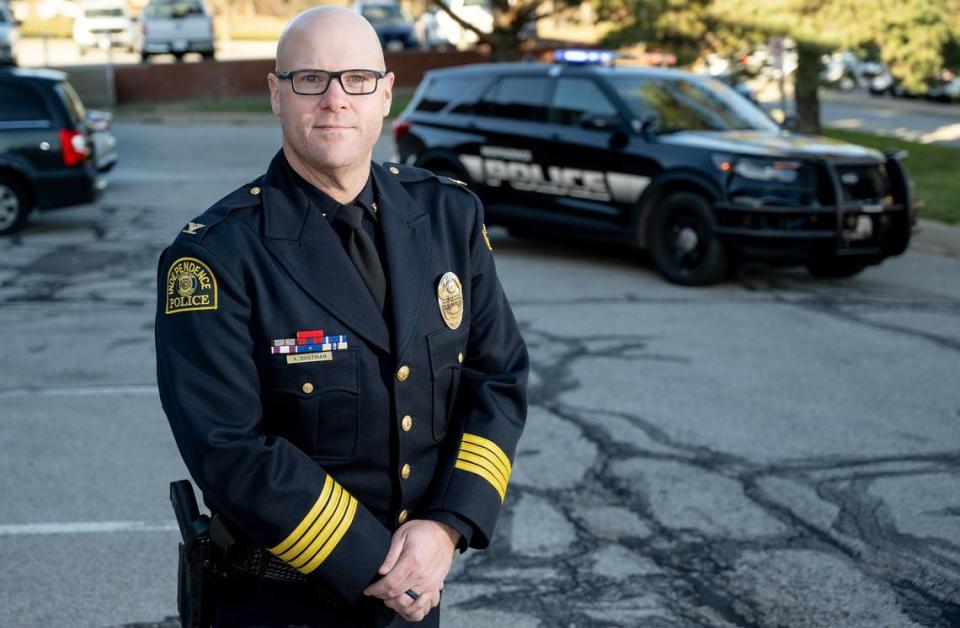
Since that crash, Independence police have paid out nearly $4 million to settle lawsuits filed by the families of those killed or injured in chases. And in 2022, data collected as part of the Star’s investigation shows Independence police engaged in more car chases, leading to more wrecks, than any other department in the metro area.
One of the officers involved in Brown’s chase went on to participate in another chase in March 2022 that would lead to the deaths of two more innocent bystanders. That chase, too, was for a stolen Jeep.
In retrospect, Brown says, she wishes she had pulled over, even though the Jeep was stolen and she would likely have gotten into trouble for it.
“I could’ve gotten a tampering charge,” she said. “Nobody would have lost their lives.”
Who is Victoria Brown?
Brown grew up in a household where both of her parents routinely got high smoking meth and the couple’s shared addiction forced the family to move frequently.
Brown described a childhood where she and her siblings often had to fend for themselves.
“I tried to make it livable for my kids but at times it was not a stable environment,” her mother, Lisa Chipley, wrote in an email to The Star. “The further I got into my addiction, the worse I got.”
Chipley said she’s been off drugs for 12 years.
When Brown was 10, social services intervened and sent the children to live with their grandparents. They stayed there for five years. Eventually they returned to their parents, but by that time Brown was already growing up.
After earning a GED, Brown worked a variety of fast food jobs. She dated a man and had a daughter with him. After a decade together, the couple broke up.
“It was my first heartbreak. I didn’t know how to deal with it,” Brown said. “And I turned to the only way that I’ve ever seen growing up — doing drugs.”
Addiction and hanging out with the “wrong crowd” conditioned Brown to flee from police when she got into trouble.
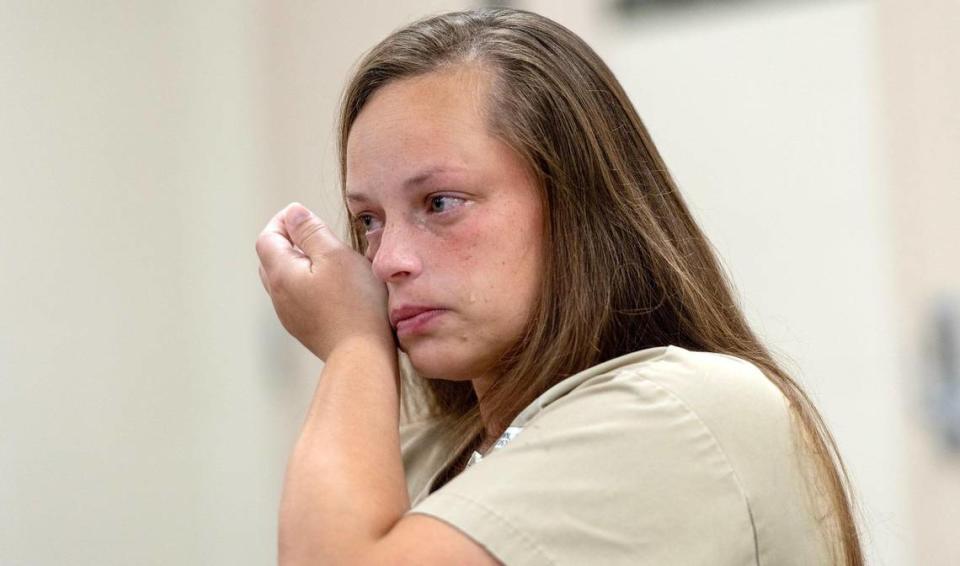
“I’ve always had interactions with the police that’s not been good,” Brown said. “It’s never been helpful from Independence or Kansas City cops for me. And honestly, I’m just scared of them.
“It’s always been, they come guns first. … They’re kicking in doors, it’s them with their guns drawn,” she said. “It’s just scary.”
In the days before the crash, Brown didn’t have a place to live. That instability compelled Brown to leave her 8-month-old daughter in the care of her aunt — she didn’t want to leave the care and the responsibility of taking care of her child to social services.
The night before the crash, Brown said, she connected with friends and got high on meth.
A police chase in Independence
Independence police officers Jeremie Stauch and Dustin Rapp were on patrol near 23rd Street and Ralston Avenue when they spotted the Jeep that Brown was driving.
A computer check of the Jeep’s Missouri license plate didn’t match the vehicle. Amanda Perry, the woman who police said drove off in the vehicle, was in the front passenger seat with Brown behind the wheel.
When the officers tried to pull the Jeep over, Brown sped away. The officers activated their emergency lights and sirens and pursued her west on 23rd Street.
The officers alerted a police dispatcher they were in a pursuit.
Inside the Jeep, Perry yelled: “GO, GO, GO, GO!” Benjamin Cope, a passenger in the back seat, pleaded with Brown, “Stop, let me out,” according to later police reports.
The officers chased the Jeep for roughly 2 miles from Independence into Kansas City.
The police car sped up to 90 mph but still trailed 300 yards behind the Jeep. Stauch and Rapp lost sight of it.
Before they spotted the Jeep again, Brown had T-boned a Dodge Avenger with four people inside at the intersection of 23rd and Television Place.
The officers found the Jeep with its front end crumpled and the Dodge resting upside down in a grassy ditch nearby.
Rapp sprinted to the Dodge, where four people were trapped. Three of them, including AaRon Daniel and Shawn Johnson, were killed. Anthony Belton Jr. who was going to see his newborn child, later died at a hospital.
Meanwhile, Stauch administered first aid to those injured in the Jeep with Brown, he wrote in his report.
The officers found Brown pinned in the driver’s seat of the Jeep. Perry was killed.
Independence police defended the chase because the Jeep was stolen. But they also had the option to end the chase if it risked public safety, according to the department’s pursuit policy.
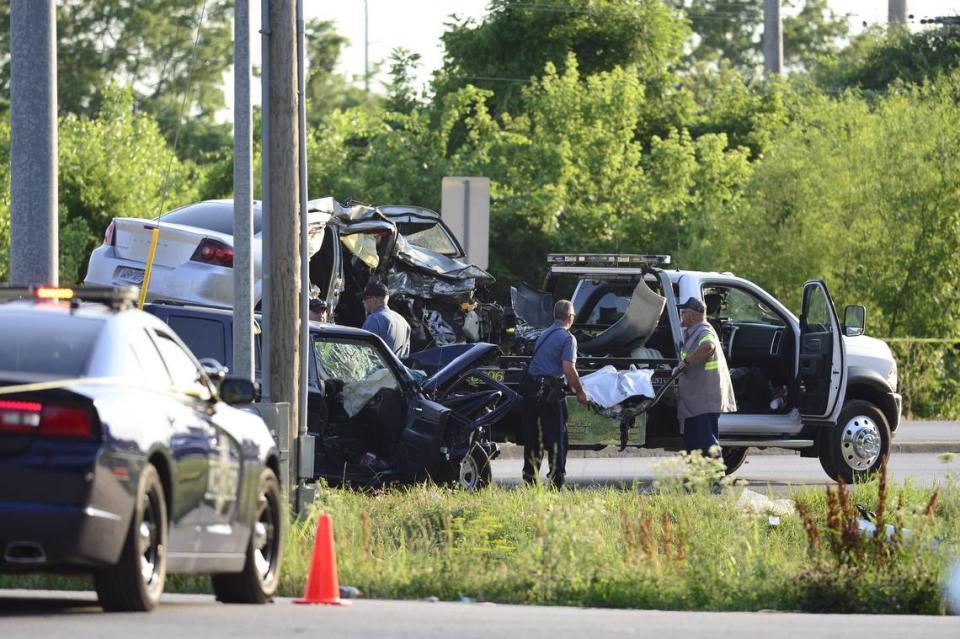
Nearly three years after the crash, Brown pleaded guilty to four counts of second-degree murder and was sentenced to 20 years in prison.
As she sits in her prison cell, Brown thinks about the chase every day.
“I feel like I should not be alive,” Brown said. “And I feel like when I saw the picture of (the Jeep) my truck, I should not have walked away from that. But I walked away with just these scars on my arms.”
Cope, who is in prison on an unrelated case, said he feels like “the police should have not pursued due to safety of others and damage to property.”
“I’m sorry to the families,” he said, adding, “if the police wasn’t so brutal, unprofessional, and careless then people wouldn’t be dead.”
Crash on busy road was predictable
As more details of the crash emerged, Independence police faced criticism for the decision to engage in a high-speed chase on a heavily trafficked road over a relatively small offense.
Witnesses were quick to point out that the outcome was predictable.
Cheryl Cunningham, who watched Brown speeding west on 23rd Street, told her mother: “Oh my God, somebody’s going to get hurt or die.”
“It was going over 100 mph,” Cunningham told The Star several days after the crash. “I knew something was going to happen.”
In fact, almost the exact same thing had happened about four years earlier on the same road, when a car fleeing police crossed into Kansas City nearby and crashed into another car, killing a 35-year-old man and injuring two passengers.
After the 2018 crash, the father of AaRon Daniel was critical of the decision to chase.
“But by no means is it worth four deaths,” McAllister Daniel told The Star in 2018. “… We’ve got four different families who have lost a loved one.”
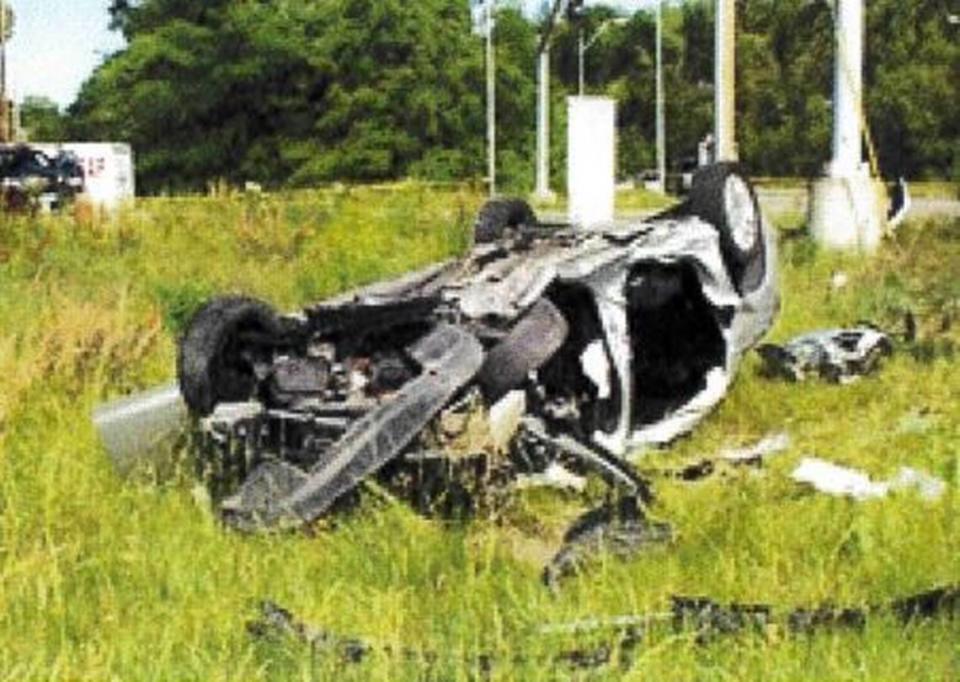
Several years later, relatives of Daniel and Johnson filed lawsuits against the City of Independence as well as against Stauch and Rapp.
To settle the civil lawsuits, the City of Independence paid out $1.2 million, according to city records.
Chipley, Brown’s mother, said she felt that police have some responsibility for causing the crash.
“I don’t agree with what she did but I will say that if IPD (Independence police) had regulations in place for chases, four people would have never died that day,” she said.
Decisions about public safety
The public safety question is not simply whether police should or should not pursue, says Seth W. Stoughton, a former Florida police officer who teaches law at the University of South Carolina.
That takes a complicated issue and artificially reduces it to two choices. The question is when, and under what circumstances, should officers chase a car.
“Answering that question requires weighing the inherent risks of each specific pursuit against the inherent risks of not pursuing that individual suspect. High-speed pursuits, specifically, are inherently dangerous,” Stoughton said.
The decision to chase is an escalation, said Brandon R. Davis, an assistant professor at Tulane University who previously taught at the University of Kansas and served on Gov. Laura Kelly’s statewide commission on racial equity and justice.
“They (fleeing suspects) should be held accountable. But so too should the police that chased the car,” Davis said. “The police have a responsibility to reassess their policies regarding chasing suspects in city limits and residential areas.”
On the other hand, studies show that a decision not to chase can cause a fleeing driver to slow down — thus reducing the danger to the public.
Brown said she would have slowed down or stopped.
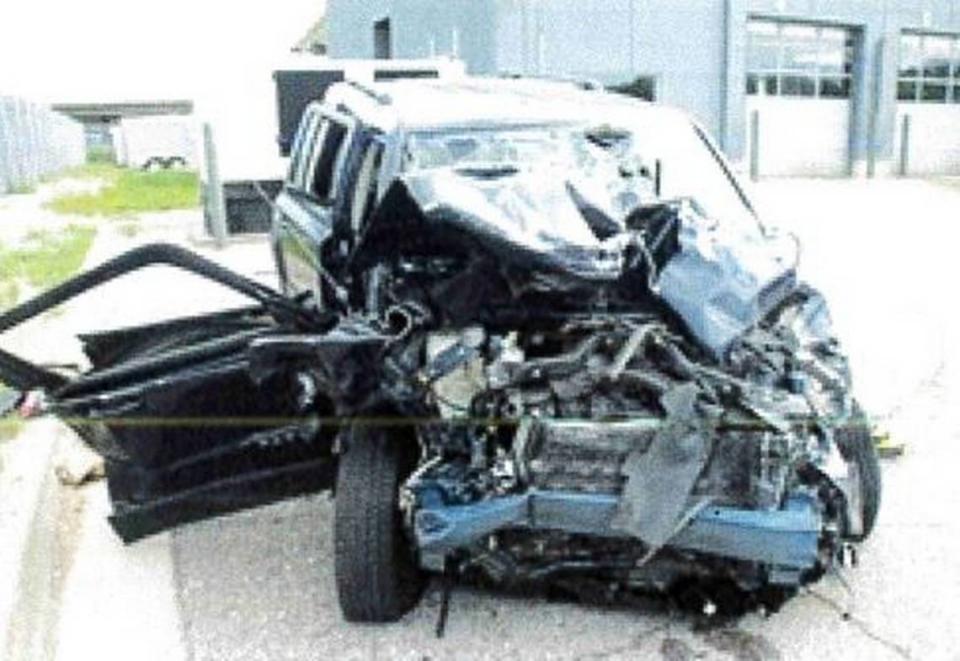
Scott, at Arizona State’s Center for Problem-Oriented Policing, recommended strengthening Independence’s policy to further restrict high-speed pursuits for minor, nonviolent offenses.
But that will help, he said, only if such provisions are consistently enforced by field supervisors and their commanding officers.
“Once all the criminal and civil liability matters are resolved, there still remains the issue of how, going forward, the risk of future fatal crashes arising out of police pursuits can be reduced,” Scott said.
“I like to think that nearly all concerned would agree that this was a bad outcome that no one would like to see recur.”
Brown’s life in prison
Each day for Victoria Brown is a mundane repetition of the previous day, one day melting into the next.
Brown shares a dormitory-style cell with three other prisoners and spends her free time reading. She participates in classes to keep her off drugs and improve her mental health.
She works the night shift in the prison kitchen, where she cleans and scrubs utensils and the ovens. The late shift allows her to sleep late most days, waking up around 11 a.m.
Memories of the police chase invade her thoughts every day. Scars on her wrists serve as visible reminders of her efforts to avoid being arrested.
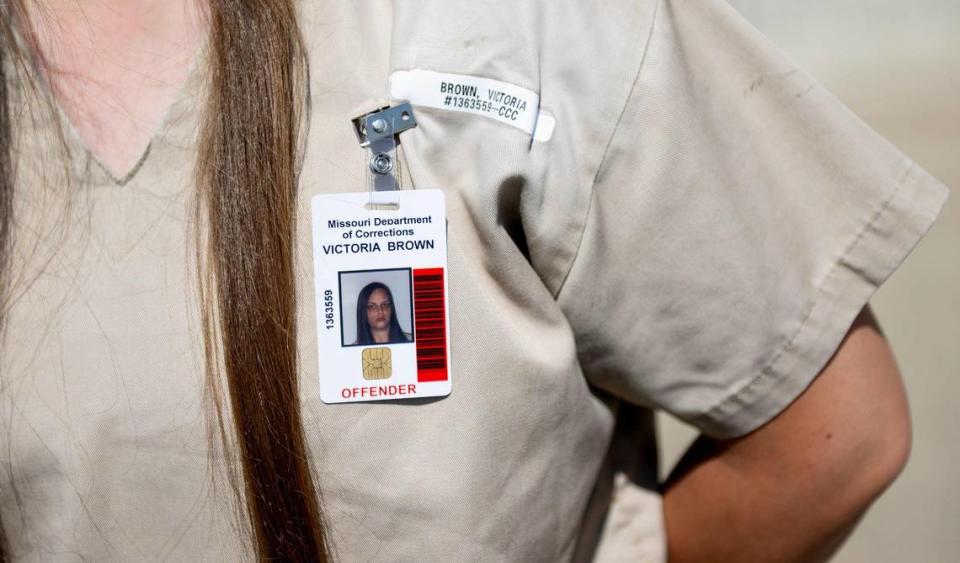
She contemplates the lives lost, her remorse and the reasons she remains imprisoned.
“I still know why I ran. I think about it all the time. Like, if I would have just stopped, nobody would have lost their lives, everybody probably would be at home right now enjoying themselves with their kids.”
Relatives, including her 6-year-old daughter, visit Brown occasionally.
Chipley said she and her daughter have reconciled.
“I do feel my daughter feels remorse for what she’s done and she regrets what she’s done,” she said.
Brown said she wants to apologize to the families of the victims for the pain she caused them.
When she is released from prison, Brown said, she also wants to reconnect with her daughter, who will be an adult then. And she hopes to earn a college degree.
“I’m very blessed. I’m very blessed,” Brown said. “There’s a reason why I’m still alive today. I haven’t figured out what my purpose is yet. But there’s a reason why I’m still sitting here.”
How we reported this
After two innocent bystanders were killed in a police chase in March in Independence, Star reporters began looking into law enforcement pursuits in the Kansas City area. Over the next nine months, the reporters filed more than 140 public records requests with more than 60 local law enforcement agencies across the metro. They gathered police pursuit policies and documents recording chases, crashes and injuries over a period of five years.
Reporters also obtained investigative case files from serious and fatal wrecks, including dashboard camera recordings. They reviewed court documents from lawsuits and legal settlements. In all, the team examined more than 4,500 pages of documents, allowing them to identify patterns in police pursuits and practices in the metro.
They also spoke with more than 60 people, including innocent bystanders who were injured in police chases, families of victims killed in pursuits, police officials, attorneys and academics who have been studying the topic for decades. They interviewed a person in prison serving a sentence for killing four people in a crash during a police chase in 2018.
The project is published in a series of eight stories, with videos of interviews and crashes, as well as infographics showing the scope of police pursuits in the metro.
Credits
Katie Moore, Glenn E. Rice and Bill Lukitsch | Reporters
Emily Curiel and Nick Wagner | Visuals
Monty Davis | Video Editing
Neil Nakahodo | Illustrations & Design
David Newcomb | Development & Design

